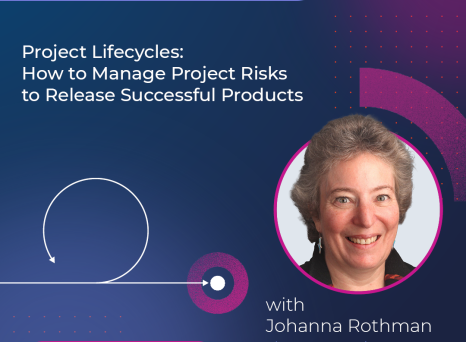Watch Terry Doerscher's webinar for more details!
In this one hour webinar, Terry shared more of his extensive experience, exploring further the topic of owner risk in large-scale projects.
Introduction
As the primary stakeholder in a major project, are you doing your part to effectively manage risk? Do you know what your responsibilities are? Building tunnels or towers, developing pharmaceuticals or aeronautic software, and similar complex engineering projects are all steeped in risk. You play a crucial role in ensuring successful project results if: You are a majority investor in an initiative that utilizes an external architect/engineering or design firm; you’re a business executive sponsoring a large corporate IT project; or you’re the sponsor of some other major engineering project.
Over the past 35 years, I have had the opportunity to see the engineering and risk management aspect of projects from several different vantage points, including conducting independent oversight assessments for major nuclear projects. Some key conclusions drawn from that experience include:
- The strategy and conceptual framework of a large project, along with its objectives, scope of work, timing, and attendant economic and situational parameters, play a far greater role in determining the overall risk profile than the performance of the project team, engineers, or trades and crafts
- The primary project stakeholder (a.k.a., owner, majority investor or sponsor) controls these elements – they are the single most important person when it comes to determining a project’s success or failure
- Most stakeholders are either unwilling, or simply unaware of the need, to invest in adequate resources, funding and management energy to fulfill their responsibilities
Take a Strategic Approach to Investor Risk
The role of the project owner vs. the delivery organization in identifying and mitigating project risk.
Project delivery organizations generally understand they must employ proven project risk management practices as part of planning and execution and do so. However, relying on an external partner to provide deliverables, especially for engineering design or product development, brings added complexities and risks into play. In addition to the increased contractual, budgetary and schedule management burden, there are strategic, economic or market considerations that extend the boundaries of what is incorporated into the overall risk profile beyond delivery-centric factors.
FIGURE 1. Project Owner Involvement is a key component for building a comprehensive picture of project risk
Unless the project owner actively engages in the risk management process to provide these inputs, the risk register will not reflect a complete picture of overall project risk.
- Complexity
- External
- Financial
- Operational
- Organizational
- Technology
- Resource
- Schedule
A collaborative approach to managing risk is warranted – but the unique dynamics of the customer-vendor relationship make it deceptively difficult to create an atmosphere of true partnership. Whenever spiraling costs, missed milestones or a seemingly endless volume of change orders emerge, the natural tendency is to place blame on the delivery organization, but just as commonly the root cause of such disputes may be traced back to the owner. Many elements represent critical risk factors that fall well outside the scope and span of control of the technical delivery organization, such as: initial concept; market, economic or usage analysis; project timing; cost-benefit assumptions; requirement specifications; and cultural/organizational change challenges. Regardless of who is doing the work, success or failure is still ultimately the responsibility of project investor or sponsor. It is incumbent upon owners to recognize and institute active risk management, as both an essential component of overall project strategy and as stakeholder due diligence, to ensure project outcomes meet expectations.
Trust But Verify - Project Oversight
Active due diligence on the part of the project owner is essential to success.
Whenever external organizations are commissioned to provide deliverables, project owners must provide adequate oversight and assurance as an ongoing component of due diligence and risk management. Effective oversight requires:
- Clarity regarding expectations
- Transparency and access
- Audit and assurance capability
A clear, mutual understanding of what is to be accomplished on the part of the owner and delivery organization is essential to managing risk and effective oversight. Too often projects are considered “failures” simply due to lack of agreement about what constitutes “success.” We mentioned earlier the need for collaboration, and that this is never more apparent than when ensuring the scope of work and supporting requirements are complete and unambiguous. Although the owner is responsible for taking the lead to define these elements, the delivery organization should be incentivized to point out any gray areas, ask questions, identify options and alternatives, and help crystallize deliverable standards for utility and quality.
Work scoping and requirements definition – in addition to mitigating the risk of future scope, quality and functional issues – stimulates the sponsoring party to thoroughly think about and identify what they really want and need, in tangible, measurable terms. Employing Benefit Realization techniques as the project is conceptualized can assist in this process.
Effective oversight is predicated on visibility; owners must insist on project controls and data transparency, including access to project schedules, plans, and related documentation. This is a good reason for major complex projects to employ a web-based, collaborative PPM system like Planisware; a readily accessible ‘single source of truth’ ensures that all parties are using a common information source that is trustworthy and timely.
For large, expensive projects, simply relying on reports, status meetings and conference calls isn’t good enough. The owner should also be prepared to put “boots on the ground.” In the form of your own independent project assessors, sometimes referred to as IV&V (independent verification and validation). Deploying your own subject matter representatives is essential to independently assess, report and visually confirm work product and progress, ask probing questions, verify information, provide clarifying insights and guidance when needed, and protect your investment.
Project owners should view independent project assessors as essential. Even the delivery organization’s project management will come to find their contribution of value – when they start asking for the assessor’s next review, the assessor knows they’re contributing to a good job. I know that our project assessment firm saved client owners orders of magnitude more money compared to the cost of our services.
Fail Early/Win Early
Working with the delivery organization, structure your project to both identify and neutralize key risks early, before significant sunk costs are incurred.
As an example, several years ago I was heading up the implementation group for a technology provider that won a multi-million dollar opportunity with a global energy provider. The project was to configure and deploy a new business system to more than 7000 users in 68 countries. At the time, this customer topped the Fortune 500 list, and for good reason; they had a strong project management culture and savvy risk managers. As their delivery partner, even though it resulted in delaying our financial gratification, I found it fascinating to watch how they structured their initiative to systematically eliminate the majority of the technical and functional risk – with less than $100K in up-front commitment.
This helps illustrate that it is far better to invest 10-20% of the total budget to investigate whether the project will likely deliver intended results than to discover with certainty upon completion that it doesn’t. Consider how your initiative can reduce risks by:
- re-ordering activities,
- deferring major expenses, or by
- investing in additional tests,
- conducting proof of concept pilots, or
- commissioning independent studies.
The Pragmatic Investor and ’Will to Pay’
As the principal investor, you have the responsibility to yourself and other stakeholders to ensure your project delivers value.
Usually value is a function of estimated cost relative to expected benefit, and an objective analysis of risks associated with both calculations is warranted.
By definition, all risks have a potential monetary impact. If it doesn’t somehow affect the bottom line, it’s just an event, and not a true risk. A realized risk can take on many forms: schedule slippage affecting time to market or increased resource costs; delays due to health and safety impacts; the outright financial impacts of additional materials, rework, fines, increased equipment rent or cost of additional labor; changes in project deliverables that affect volume, functionality, quality, or aesthetics. Secondary or indirect risk related costs also accumulate, such as the cost of taking mitigating actions, increased management overhead and administration, or harm to reputation and brand.
All known risks have two things in common: calculable financial effects and a presumed probability of occurrence. Factoring in probability, the potential cost of a project can be risk adjusted to more accurately reflect true potential costs.
Failure to adequately incorporate the potential cumulative cost of risk is probably the single greatest reason that large projects go significantly over budget when compared to overly optimistic initial estimates and inadequate contingencies.
Failure to adequately incorporate estimating error is an additional reason for perceived cost overruns. Industry standards exist for classifying the risk of cost overruns (e.g., from the AACE, Association for the Advancement of Cost Engineering). For early stage Class 4 estimates, estimating errors range anywhere from +20 to +50%. This only increases with the complexity or volatility of the endeavor.
FIGURE 2. Cost Estimate Classification Matrix based on the AACE Classification System
https://www.costengineering.eu/Downloads/articles/AACE_CLASSIFICATION_SYSTEM.pdf
A realistic assessment of potential cost is only half of the value equation; you also need to consider the accuracy of project benefit calculations. In particular, the financial contribution of go-to-market investments is routinely inflated. Be sure to scrutinize projections associated with sales volume, market share, time to maturity, efficiency gains, life expectancy, etc. Evaluate the underlying basis for key benefit assumptions, including their degree of volatility.
Collectively, factors like risk-adjusted project cost, estimating uncertainties, and conservative benefit assumptions together create the “worst-case scenario.” Although sobering, these numbers position you to realistically evaluate the value of the opportunity. Granted, political considerations or investor relations may influence how this information is presented to others, but as the project owner, you owe it to yourself and other stakeholders to prepare for the worst, rather than simply hope for the best.
All of this brings us to the concept of “Will to Pay” – the biggest “wager” on a project’s success that an investor is willing to bet, considering the project’s risk. As the primary investor, considering the potential cost of an investment with uncertainties and risks are factored in, you must regularly assess whether the project still represents a good value. If the answer remains “yes,” then continue to identify the next tipping point where escalating high-side risks (and attendant costs) would outweigh the low-side benefits of the opportunity. This number (or something near it) constitutes the upper limit of your Will to Pay.
The gap between Will to Pay and early stage adjusted estimates represents your margin to accommodate both known and unknown uncertainties. If major risks are realized or new risks emerge, and financial projection trends approach your Will to Pay, then it is time to consider restructuring or canceling the project.
FIGURE 3. Risk-Adjusted Cost/Benefit vs. Will to Pay
SUMMARY
With every passing year, I become more convinced that the chronic lack of effective, active stakeholder engagement in their projects, particularly at the executive/investor level, constitutes the single greatest threat to achieving successful project outcomes. It is incumbent upon project owners to:
- ensure that their projects represent viable investments with an acceptable level of risk from the onset;
- maintain adequate involvement and oversight during planning and execution; and
- take responsibility for maximizing the value reaped from the results.
Those that do will reap rewards; those that don’t will face a whirlwind of soaring costs.
The delivery organization can only play the cards that it is dealt; it is the responsibility of the project owner to favorably stack the deck. Regardless of the methodology employed or the skills of the delivery team, the best project management in the world cannot save a project that represents a bad investment to begin with.


